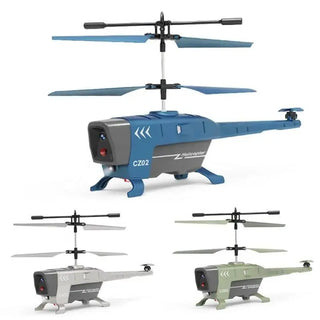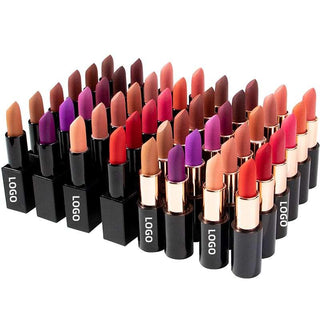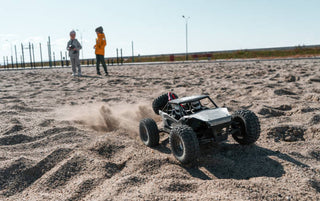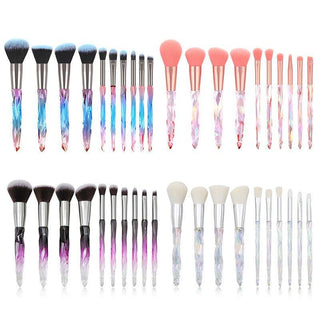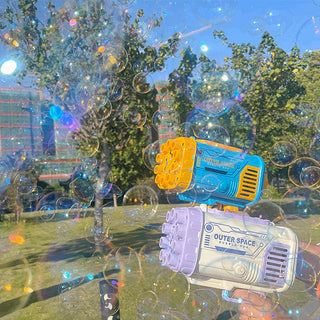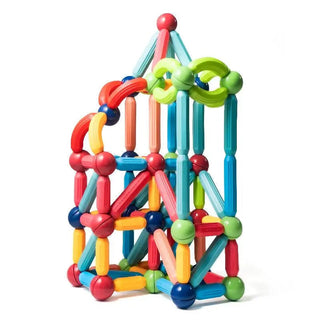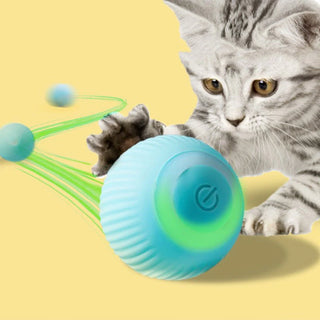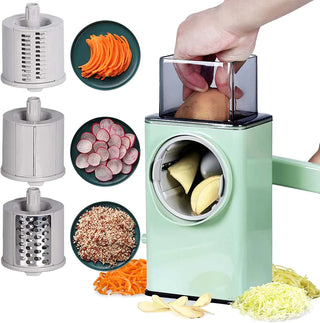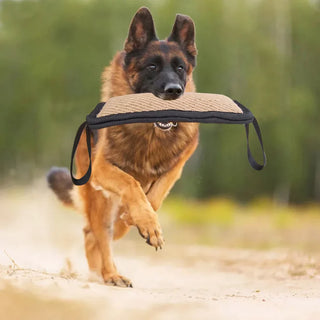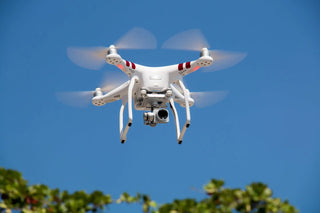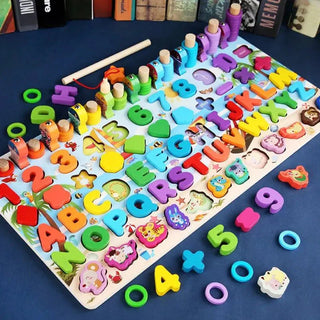In recent years, the combination of farming and drones has transformed the agricultural landscape. As technology advances, drones are becoming essential tools for farmers, helping them monitor crops, manage resources, and improve yields. This article explores how drones are revolutionizing agriculture, the technological innovations behind them, and their future potential.
Key Takeaways
- Drones provide farmers with detailed aerial views, enabling them to identify issues early on.
- Using drones can significantly cut down on time and costs for tasks like spraying and monitoring crops.
- Advanced sensors and AI enhance the capabilities of drones in modern agriculture.
- Drones support precision farming, which minimizes waste and boosts crop production.
- Despite their advantages, challenges such as regulations and the need for training exist.
The Rise of Commercial Drones in Agriculture
The use of commercial drones is really taking off in agriculture. It's not just a cool gadget anymore; it's becoming a serious tool for farmers. The market is expanding rapidly, and it's easy to see why. Drones are offering solutions to problems that farmers have been facing for ages. They're changing how things are done, from checking on crops to spraying fields. It's a pretty big deal.
Market Growth Projections
The commercial drone market is seeing some serious growth. Projections show a big jump in the coming years. It's estimated to go from $5.32 billion in 2024 to $9.34 billion by 2030. That's a huge increase, and agriculture is a big part of it. More and more farmers are realizing the potential of drones, and that's driving the market forward. The agricultural drones market is expected to reach $17.9 billion by 2028.
Key Applications in Farming
Drones are being used for all sorts of things on the farm. Here are a few examples:
- Crop Health Monitoring: Drones can fly over fields and take pictures, helping farmers spot problems early on.
- Precision Spraying: Drones can spray pesticides and fertilizers exactly where they're needed, saving money and reducing waste.
- Land Surveying: Drones can create detailed maps of fields, helping farmers plan their operations.
Drones are revolutionizing agriculture by providing farmers with real-time data and insights, enabling them to make better decisions and improve their overall productivity.
Benefits for Small and Large Farms
Drones aren't just for big farms; they can help small farms too. For big farms, drones can cover a lot of ground quickly, saving time and labor. For small farms, drones can provide detailed information that helps them make the most of their limited resources. The key is that drones offer a level of precision and efficiency that wasn't possible before.
Here's a quick look at some of the benefits:
| Benefit | Small Farms | Large Farms |
|---|---|---|
| Cost Savings | Reduced labor costs, targeted applications | Optimized resource allocation, efficient monitoring |
| Increased Efficiency | Faster problem detection, better resource use | Large-scale data collection, streamlined operations |
| Sustainability | Reduced chemical use, water conservation | Environmentally friendly practices, data-driven decisions |
Technological Innovations Driving Drone Farming
Advanced Sensors and Cameras
Modern agricultural drones are packed with tech, especially when it comes to sensors and cameras. We're talking multispectral cameras, thermal imaging, and even LiDAR. These tools give farmers a super detailed view of their fields, making it easier to keep an eye on crops and manage the land. It's pretty wild how far things have come. These sensors are always getting better, so they'll only become more important in farming.
Integration with AI and Machine Learning
AI and machine learning are changing what drones can do. AI-powered software helps drones process tons of data in real-time. This means drones can make decisions on their own, which makes things more efficient. It's like having a smart assistant in the sky. The agricultural drone industry is really taking off because of these innovations.
Edge Computing and Quantum Sensors
Edge computing is about processing data closer to where it's collected, which means faster insights and less reliance on sending everything to the cloud. Quantum sensors are still pretty new, but they could offer even more precise measurements of things like soil composition and plant health. Imagine drones that can analyze data right in the field, giving farmers immediate feedback. It's all about making farming smarter and more efficient. Here's a quick look at how these technologies stack up:
| Technology | Benefit |
|---|---|
| Edge Computing | Faster data processing, less cloud reliance |
| Quantum Sensors | Ultra-precise measurements |
Drones are becoming an essential tool for modern farmers, offering a mix of efficiency and precision. As the tech gets better and farmers get used to these flying helpers, we'll see even more drones in everyday farming. The crop monitoring is getting better and better.
The Role of Drone Farming in Modern Agriculture
Historical Context and Evolution
Drone farming's journey is pretty interesting. It wasn't always about crops and fields. Initially, drones were more of a military thing. But someone, somewhere, had the bright idea to see what they could do for agriculture. Over time, as tech got better and cheaper, drones became more accessible to farmers. Now, they're a pretty normal part of farming, helping with everything from crop monitoring to keeping an eye on livestock. It's a big change from where things started.
Key Benefits for Farmers
Drones bring a lot to the table for farmers. It's not just about having a cool gadget; it's about making things easier and more efficient. Here are a few key advantages:
- Cost Reduction: Drones can cut down on expenses related to keeping tabs on crops and managing them. You don't need as much expensive equipment or as much manual labor.
- Precision Agriculture: Drones give you detailed info on how healthy your crops are, what the soil is like, and if there are any pests. This helps farmers make smart choices and use resources wisely.
- Environmental Sustainability: By cutting down on the need for chemicals and water, drones help promote farming practices that are good for the environment.
Drones are changing agriculture by giving farmers real-time data and insights. This helps them make better decisions and improve how much they produce overall.
Integration with Other Agri-Tech Solutions
Drones don't work in isolation. They're increasingly being used with other technologies like IoT devices and advanced sensors. This combination gives a complete picture of the farm, from the health of the soil to the condition of the crops. As sensor capabilities get better, drones will play a big role in keeping a close eye on crops and managing the land.
Current Adoption Rates of Farming and Drones
Global Trends in Drone Usage
Okay, so, drone use in farming is definitely picking up speed around the world. It's not everywhere yet, but you see more and more farmers starting to use them. A lot of this has to do with how much easier they make things like checking on crops and managing fields.
- North America and Europe are leading the way, but you're also seeing growth in places like Australia and South America.
- The type of drone use varies, too. Some farmers are using them just for simple visual checks, while others are getting into more advanced stuff like thermal imaging and precision spraying.
- Government regulations play a big role. Places with clearer rules tend to see faster adoption.
Challenges to Adoption
It's not all smooth sailing, though. There are still some pretty big hurdles that keep farmers from jumping on the drone bandwagon. Cost is a big one. I mean, buying a drone, agriculture drones, and all the fancy sensors can be expensive. Then there's the whole learning curve. Not everyone is tech-savvy enough to fly a drone and make sense of the data it collects. Plus:
- Initial investment can be high.
- Farmers need training to operate drones and interpret data.
- Regulations can be confusing and restrictive.
Honestly, sometimes it feels like you need a pilot's license and a computer science degree just to get started with drone farming. It's a lot to take on, especially if you're used to doing things the old-fashioned way.
Success Stories from Early Adopters
Despite the challenges, there are some really cool success stories out there. Farmers who've embraced drone technology are seeing some serious benefits. They're able to spot problems in their fields way earlier, which means they can take action before things get out of control. Plus, they're using fewer chemicals and less water, which is good for the environment and their wallets. Here's a quick look at some of the wins:
| Benefit | Example |
|---|---|
| Early Problem Spotting | Identifying disease outbreaks before they spread across the entire field. |
| Reduced Input Costs | Using targeted spraying to minimize pesticide use. |
| Increased Yields | Optimizing irrigation based on drone-collected data. |
The Future of Drones in Agriculture
Agriculture is changing fast, and drones are a big part of that change. It's not just about flying cameras anymore; it's about how these flying machines can work together with other tech to make farming smarter and more efficient. Let's look at what's coming.
Swarm Technology
Imagine a bunch of drones working together like a team. That's swarm technology. Instead of one drone checking a field, you have many, each doing a specific job. This could mean faster data collection, more precise spraying, and even automated harvesting. It's like having a whole crew of farmhands in the sky. The possibilities are pretty exciting, and it could really change how we manage large farms.
Integration with IoT and 5G
Drones aren't going to work alone. They'll be part of a bigger network of devices, all talking to each other. Think of IoT devices like soil sensors and weather stations, all connected through 5G. This means drones can get real-time data and make decisions on the spot. For example, if a soil sensor detects low moisture, a drone could automatically water that area. It's all about making farming more responsive and efficient.
Emerging Applications in Precision Farming
Precision farming is all about using data to make better decisions. Drones are already helping with this, but there's more to come. We're talking about things like:
- Hyper-local weather forecasting: Drones can collect weather data at a very small scale, helping farmers predict and prepare for changes.
- Early disease detection: Drones with special sensors can spot diseases in crops before they're visible to the naked eye.
- Automated planting: Drones can plant seeds with pinpoint accuracy, reducing waste and improving yields.
The future of agriculture drones is already taking a substantial turn as artificial intelligence, machine learning, IoT, and automation become more common. Drones are paving the way for intelligent farming and becoming farmer’s companions.
Here's a quick look at how drone tech might evolve:
| Feature | Current Status | Future Potential |
|---|---|---|
| Data Collection | Basic imagery | Advanced analytics, real-time insights |
| Automation | Limited | Full autonomy, swarm operations |
| Connectivity | Wi-Fi, 4G | 5G, satellite integration |
| Decision-Making | Human-driven | AI-powered, automated adjustments |
Environmental Sustainability Through Drone Technology
It's easy to see how drones are changing farming for the better. One of the coolest things is how they help the environment. We're not just talking about slightly better; we're talking about real, noticeable improvements in how we treat the planet while growing our food.
Reducing Chemical Inputs
Drones are like super-smart eyes in the sky. They can spot exactly where crops need help, whether it's fertilizer or pest control. This means farmers don't have to blanket their entire fields with chemicals. Instead, they can target specific areas, cutting down on the amount of stuff sprayed and reducing pollution. It's a win-win: better for the environment and saves money on chemicals. Precision agriculture optimizes resource allocation and minimizes environmental impact.
Water Management Innovations
Water is precious, especially in some farming areas. Drones with special cameras can see where fields are dry or where irrigation isn't working right. This lets farmers use water more efficiently, only watering where it's needed. This is a big deal for water conservation, especially with changing climate patterns.
Promoting Biodiversity in Farming
Drones can help create more diverse and healthy ecosystems on farms. By monitoring fields and identifying areas where different plants or habitats can thrive, farmers can encourage biodiversity. This can mean planting wildflowers along field edges to attract pollinators or creating small wetlands to support wildlife. It's all about making farms more than just places to grow food; they can be havens for nature, too.
Here's how drones help:
- Monitoring wildlife populations.
- Tracking deforestation.
- Planting trees in reforestation efforts.
Innovative Pilot Projects in Drone Farming
Case Studies from Around the World
So, you've heard about drones in farming, right? It's not just some futuristic fantasy; it's happening now! All over the globe, people are trying out drone tech in agriculture, and some of these pilot projects are seriously cool. These projects are showing us what's possible when you combine drones with farming know-how.
For example, there's this project in Africa where they're using drones to help small farmers keep an eye on their crops. The drones give them real-time info on how healthy the plants are, which helps them make smart choices and get better harvests. And in Asia, they're testing drones for precision irrigation, making sure water is used efficiently.
Impact on Smallholder Farmers
Okay, so drones are cool, but what do they really do for the average farmer? Well, for small farmers, drones can be a game-changer. Think about it: instead of walking through fields all day, checking every plant, they can send up a drone and get a quick overview. This is especially helpful in places where farms are small and resources are limited.
Here's a quick look at some of the benefits:
- Faster crop monitoring
- Reduced labor costs
- Better resource management
Drones are not just for big corporations; they can also help small farmers improve their yields and make a better living. It's about giving them the tools they need to succeed.
Lessons Learned from Pilot Programs
Not everything goes perfectly, of course. These pilot programs are also teaching us a lot about what doesn't work. For example, some projects have struggled with regulatory issues or technical problems like battery life. But that's the point of these trials – to figure out the best ways to use drones in different situations.
Here's a table of common challenges:
| Challenge | Description |
|---|---|
| Regulatory hurdles | Getting permission to fly drones can be tricky. |
| Technical issues | Batteries die, weather gets in the way, and sometimes the connection drops. |
| Training needed | Farmers need to learn how to use and maintain the drones. |
Drones are changing the way we farm! These flying machines can help with planting seeds, checking crops, and even spraying fertilizers. Some farmers are trying out new ideas with drones to see how they can make farming better and more efficient. If you want to learn more about these exciting projects and how they can help the future of farming, visit our website today!
Wrapping Up the Drone Farming Revolution
In conclusion, drones are really shaking things up in farming. They give farmers a whole new perspective on their fields, helping them catch issues early and use resources more wisely. This tech is making agriculture smarter and more efficient. As we look ahead, it’s clear that drones will only become more important in the farming world. They hold the promise of producing more food while using fewer resources, which is crucial as the global population grows. The future of agriculture is looking bright, and drones are leading the charge.
Frequently Asked Questions
How are drones improving farming practices?
Drones help farmers by allowing them to see their fields from above. This makes it easier to find problems early, manage crops better, and use resources like water and fertilizers more wisely.
What are the main uses of drones in agriculture?
Drones are used for various tasks such as checking crop health, spraying fertilizers and pesticides, and managing irrigation. They provide important data that helps farmers make better decisions.
Can small farms benefit from using drones?
Yes! Drones can be very helpful for small farms. They make it easier for farmers to monitor their crops and manage resources without needing expensive equipment or a lot of manual labor.
What challenges do farmers face when using drones?
Some challenges include the cost of drones, understanding how to operate them, and learning how to use the data they collect. Training may be needed to help farmers get the most out of this technology.
How does drone technology support environmental sustainability?
Drones help reduce the use of chemicals and water by allowing for more targeted applications. This means farmers can grow crops more sustainably and protect the environment.
What does the future hold for drones in farming?
The future looks bright! We can expect to see more advanced drones that work together in swarms, better data analysis with AI, and even more uses in precision farming to help feed the world.

